Mollusc of the year 2021: The Greater Argonaut (Argonauta argo)
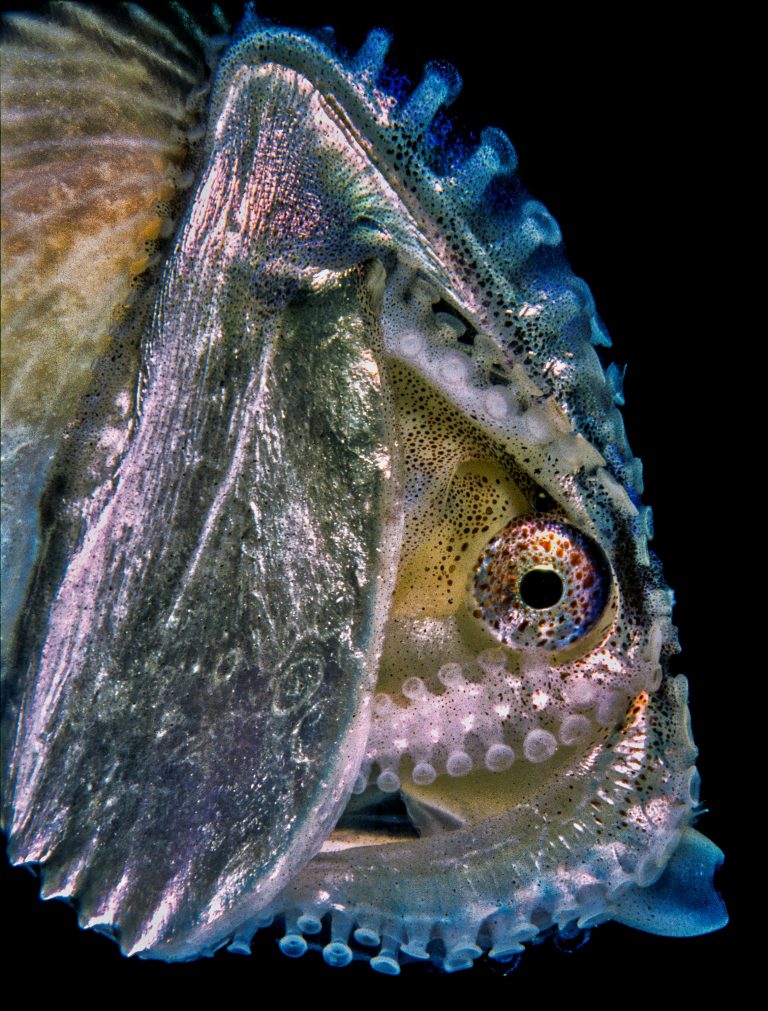
Photo: Marco Gargiulo
Argonauta argo has been called the “most romantic” mollusc, evoking long sea voyages and a spirit of adventure. The Greater Argonaut is a type of pelagic octopus, which lives close to the surface, with only a passing resemblance to its more familiar octopus cousins that live on the seafloor. The female Argonaut has specially adapted arms that look like oars and secrete a paper-thin porcelain shell. The unique shell serves her as a boat and also a protective case for her eggs. The male of the species is very different, and much smaller than the female. Argonauts are also voracious predators, they bite their prey and inject a poison produced in their salivary gland. These curious seafarers are rarely seen, but they have captured the imaginations of over 7500 people from around the world who gave this mollusc a victory as the first international Mollusc of the Year.
The genome of the Greater Argonaut will reveal particularly important secrets of octopus evolution. Earlier studies indicated that this group separated from other octopuses early in the evolutionary history of the group. The Argonauts may retain some characteristics of primitive octopuses, but they also have unique adaptations such as the unique shell. Understanding these features of the genome will help us understand the evolution of octopuses, cephalopods, and of molluscs in general. The genes that control the formation of the special shell will also help to understand how skeletons and armour are made in all animals with hard parts.
The five nominees for the "Mollusc of the Year 2021":
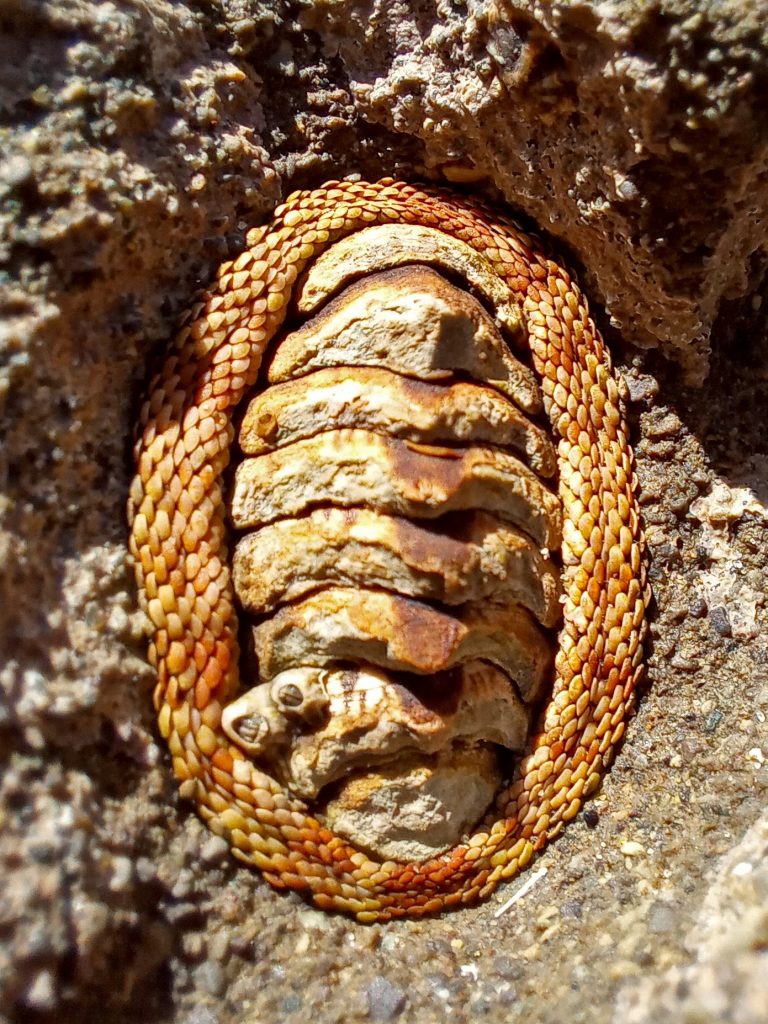
Sypharochiton pelliserpentis, Photo: Priscila Salloum
Sypharochiton pelliserpentis, the Snakeskin Chiton
What is it? My name is Snake Skin, I am a chiton (class Polyplacophora). My ancestors were on Earth 400 million years ago, and we have only lived in the sea since then.
Where do they live? I belong to the only chiton group thriving intertidally in New Zealand. All the other chitons cannot tolerate air exposure like we do, so we dominated the area. My group is also present in Australia. We spend our lives attached to rocks of pretty beaches and reefs.
What do they look like? Following the chiton fashion, I have eight coloured and sculptured shell plates. These allow me to move flexibly, crawl over complex terrain and roll into a ball for protection. My teeth are made of iron magnetite. However, my most stylish piece is my girdle, encircling all my eight plates with beautiful scales forming a unique snake skin pattern.
What secrets will this genome reveal? Because we live in the intertidal zone, my species is very special compared to other chitons. While other chitons can’t be out of water for long because they dry out, we are able to tolerate a 75% loss of our total body water. We also deal very well with large changes in temperature and salinity, as we can adapt our behaviour to minimize the effects of environmental stress. If you want to know the secrets of my special adaptations, vote to decipher my genome!
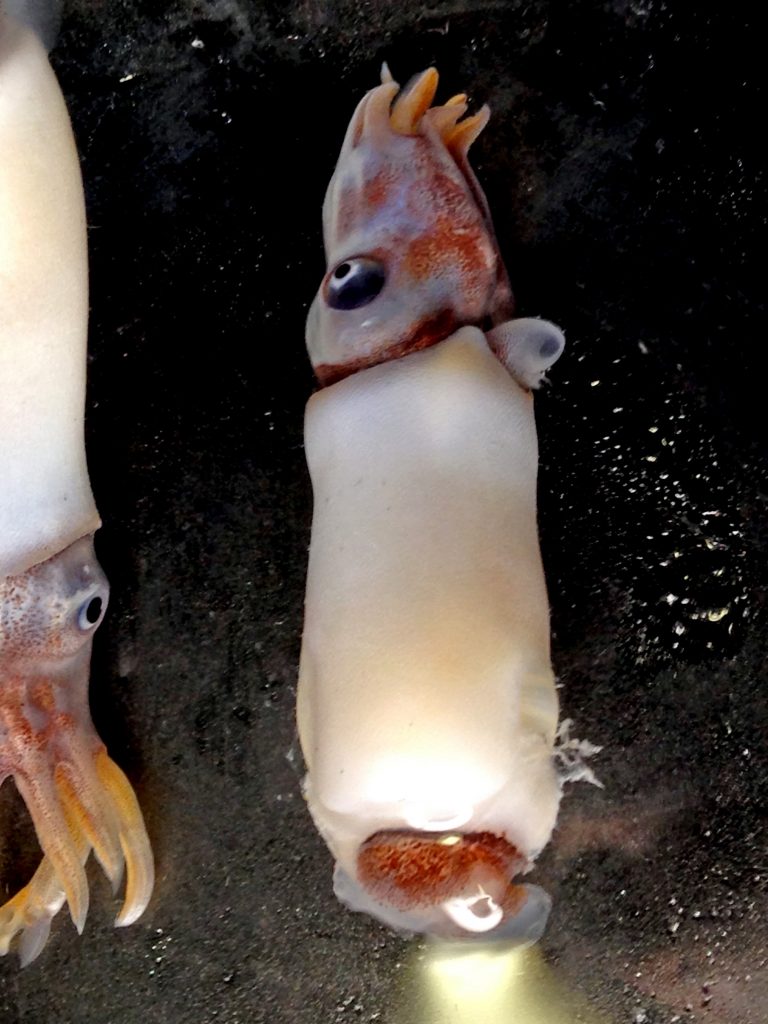
Spirula spirula, Photo: Víctor Tuset
Spirula spirula, the Ram’s Horn Squid
What is it? A tiny, upside down squid with a coiled shell, class Cephalopoda
Where do they live? In seas all over the world, usually in tropical and subtropical regions, but in deep water from 100-1000 m below the surface.
What do they look like? This funny little squid was captured on video for the first time only in 2020, swimming with its arms up and its head down. They have an internal shell coiled into a flat spiral, that has many chambers that control buoyancy and help the animal move up or down in the water column. They have two little fins at the bottom, on either side of the shell, arms and tentacles like a squid, and big dreamy eyes.
What secrets will this genome reveal? Cephalopods once ruled the seas, and many extinct groups such as belemnites and ammonites were fearsome marine predators. Spirula is the only living cephalopod with a coiled shell, and the closest living relative to fossil belemnites. The genome of Spirula will help to understand ancient biomineralization pathyways in molluscs and the relationships among living squid and cuttlefish.
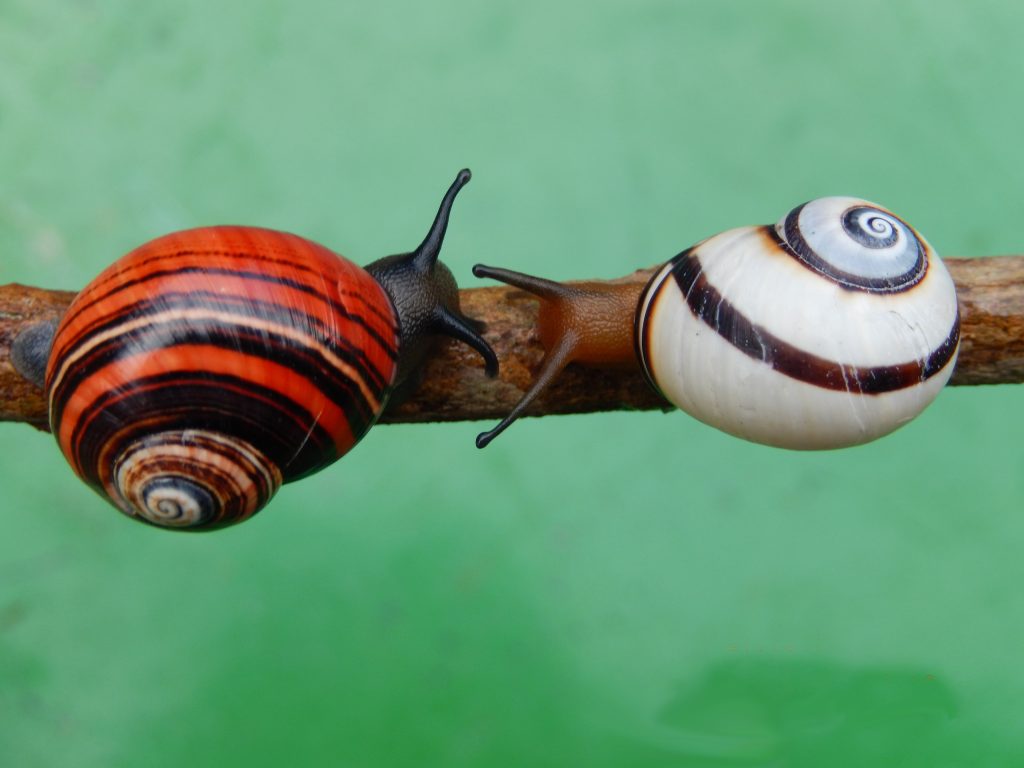
Polymita picta, Photo: Bernando Reyes-Tur
Polymita picta, the Painted Snail
What is it? A unique but endangered Cuban snail famed for its vibrant shell colours and enigmatic love dart, a device to stab mating partners.
Where do they live? Only in Cuba, along a thin strip of coast, eating mosses and lichens in trees by which they protect local agriculture, mainly coffee plantations.
What do they look like? Possibly the most beautifully coloured snail shell in the world, 2-3 cm across, in yellow, brown, red, green, white, black, or orange, with elegant spiral bands. They are male and female at the same time, breed in the rainy season using an elaborate and surprising mating and live for around one year.
What secrets will this genome reveal? Genome information will provide the much-needed basis for understanding molecular processes important for this species’ colour polymorphism, mating physiology and ecology. These snails are threatened with extinction due to habitat loss and poaching. Genomic resources will not only help determine the size and diversity of the remaining population but also encourage preservation of their ecosystem
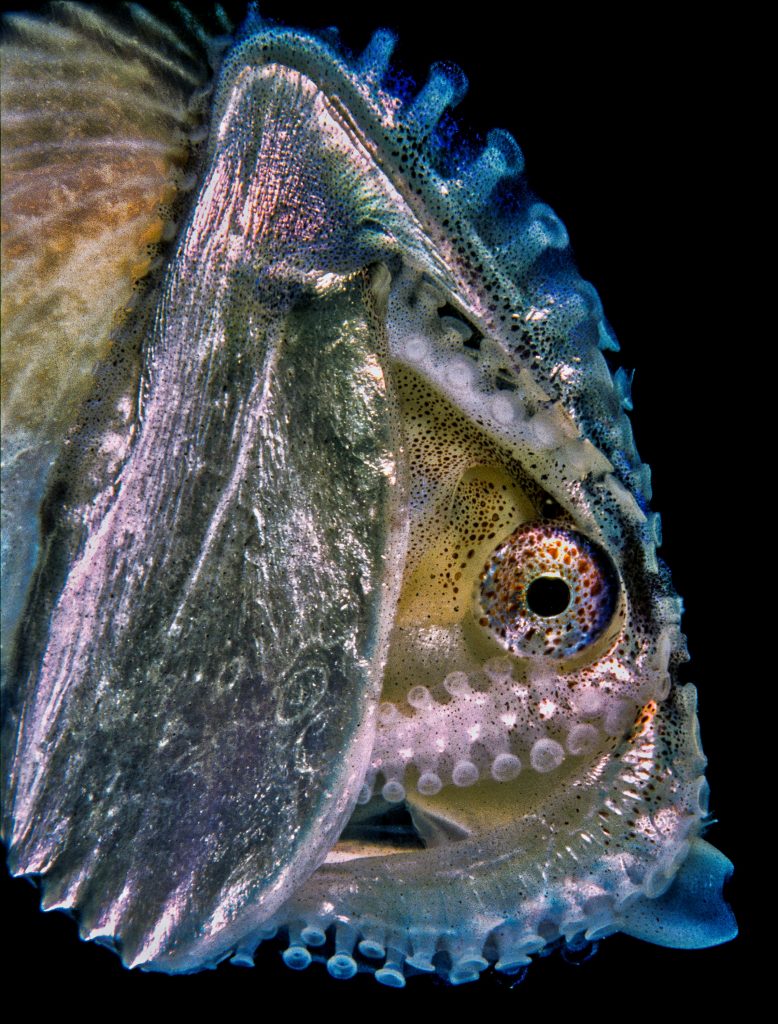
Argonauta argo, Photo: Marco Gargiulo
Argonauta argo, the Greater Argonaut
What is it? The Greater argonaut, also known as the Paper Nautilus, is a pelagic octopus. Argonaut molluscs were thought since Aristotle to use their large pair of dorsal arms as sails or oars and their shells as a ship to float across the ocean’s surface regardless of the dangers.
Where do they live? Originally described from the Mediterranean Sea, Argonauta argo is considered an astronaut of the sea due to its pelagic lifestyle, although it is rarely encountered by humans. Unlike the majority of the cephalopods, he is known to float near the surface or in the water column.
What do they look like? Argonauta species are characterized by an extreme sexual dimorphism, with females growing up to 30 cm, and males being usually much smaller (up to 2 cm). Females also have specially-adapted extra wide arms (the famous sails or oars) that secrete the eggcase (the famous shell). Argonauts are also voracious predators, they bite their prey and inject a poison produced in their salivary gland.
What secrets will this genome reveal? Argonauts are an early-branching lineage in Octopoda, meaning they may retain some characteristics of ancestral octopuses. Their “shell” is entirely calcitic and lacks gas-filled chambers. They produced by the two modified arms – an evolutionary innovation, unique to the genus Argonauta! Sequencing its genome may finally give insights into this and other long-lasting mysteries surrounding this species.
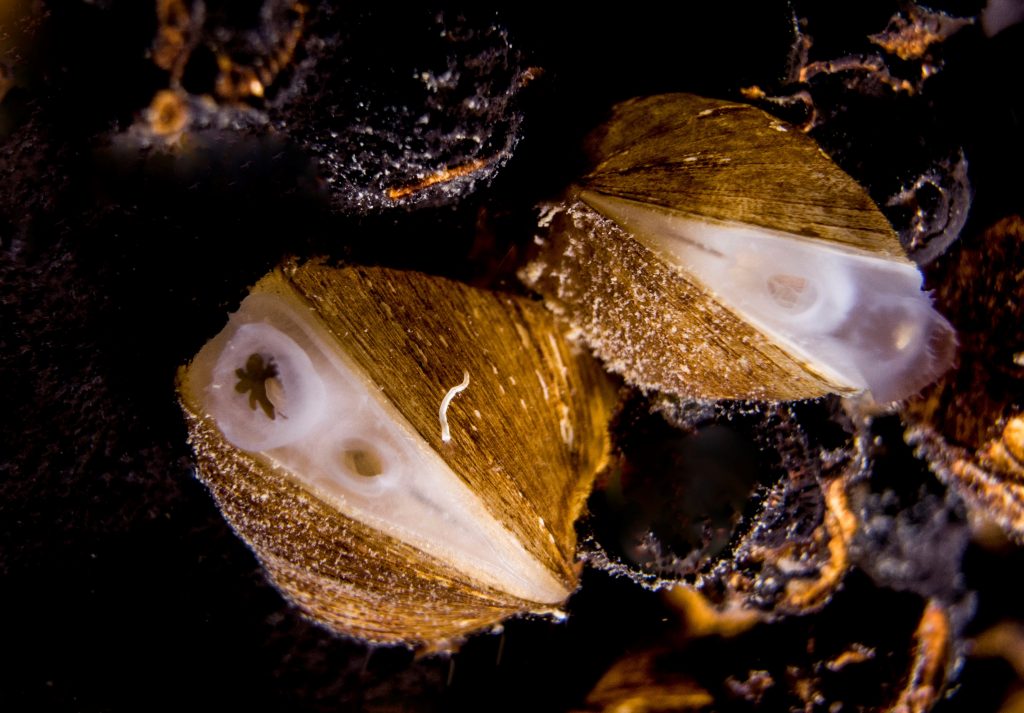
Congeria kusceri, Photo: Vedran Jalžić
Congeria kusceri, the Cave Clam
What is it? Highly endangered relicts of once widespread genus, Congeria spp. are the only known freshwater bivalves inhabiting caves.
Where do they live? Congeria kusceri has successfully mastered social distancing for 5 million years. Living in secluded karst underground cave systems of Croatia and Bosnia-Herzegovina, it has survived environmental perturbations that lead to the extinction of all other Congeria species.
What do they look like? These small pale mussels, whose morphology has not changed significantly for millions of years, live in pure waters in dark, food-depleted underground caves.
What secrets will this genome reveal? Like many cave animals, Congeria kusceri has evolved numerous adaptations such as albinism, vision loss (yes, other clams have light sensitive organs!) and extreme longevity. Yet it is closely related to well-known surface species like the invasive Zebra Mussel. Comparing the cave clam to its relatives may reveal whether its morphological stasis is matched by a slowly evolving genome and may improve our understanding of cave adaptation and invasiveness.
The Mollusc of the Year 2021 was selected from over 120 nominations submitted by international researchers and members of the public. The jury then selected five species: the painted Snail (Polymita picta), the Cave Clam (Congeria kusceri), the Greater Argonaut (Argonauta argo), the Snakeskin Chiton (Sypharochiton pelliserpentis) and the Ram’s Horn Squid (Spirula spirula). that entered the second round as finalists.
The five candidates for the title „Mollusc of the Year 2021“ were selected by a scientific jury, whose members were: Prof. Julia Sigwart, Section leader at the Malacology Department of the Senckenberg Museum, Prof. Yasunori Kano, researcher at the Department of Marine Ecosystems Dynamics, Atmosphere and Ocean Research Institute at the University of Tokyo, also member of the Unitas Malacologica, Dr. Tilman Schell bioinformatician, and Carola Greve Lab, manager of the LOEWE-Centre TBG.
„Our aim was to choose mollusc species that are not so well known to the public, but are still incredible species. We also wanted to highlight species where analysis of their genomes can reveal important scientific insights about evolution and adaptation “ – said Prof. Julia Sigwart, leader at the Malacology Department of the Senckenberg Museum.
During this final round, the LOEWE-Centre for Translational Biodiversity Genomics website was open for the public to votes.
In the two weeks a total of 21927 votes have been cast, from over 126 countries. The Greater Argonaut (Argonauta argo) has won 36 % – a total of 7888 votes for itself. In second place comes the The painted Snail (Polymita picta) with 6377 votes, followed by The Cave Clam (Congeria kusceri) with 5042 votes. The Snakeskin Chiton (Sypharochiton pelliserpentis) got 2005 votes and the Ram’s Horn Squid (Spirula spirula) 615 votes. Argonauta argo was nominated by Dr. Fabio Crocetta, researcher at the Anton Dohrn Zoological Station in Naples, Italy.